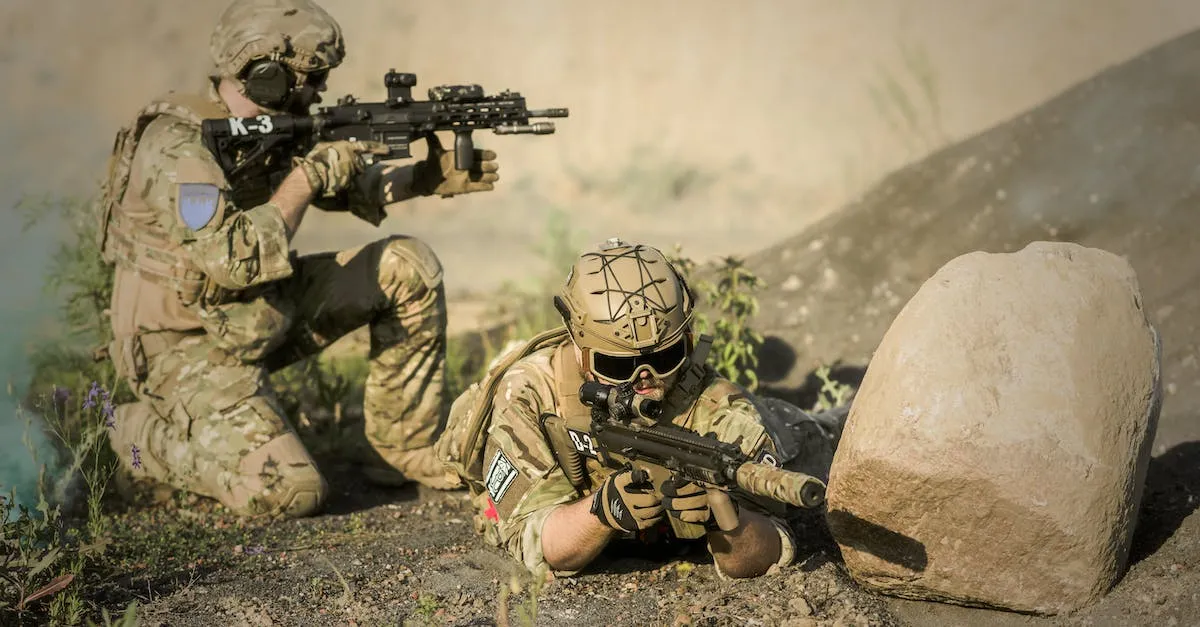Is Texas A&M University A Military School?
If you’re wondering whether Texas A&M is a military school, the quick answer is: Yes and no. While Texas A&M has a strong military heritage and presence on campus, it is not strictly a military academy like West Point or The Citadel.
In this comprehensive guide, we’ll explore the military aspects of Texas A&M in detail. You’ll learn about the history of the school’s Corps of Cadets, its military training and structure, and how the military side fits into campus life today. We’ll also look at how Texas A&M compares to true military academies in terms of strictness, requirements, and focus.
The History and Military Heritage of Texas A&M
When it comes to Texas A&M University, one might wonder if it is a military school. While Texas A&M is not officially classified as a military school, it does have a rich history and strong military heritage that sets it apart from other universities.
Founded as an all-male military college
Texas A&M University was founded in 1876 as the Agricultural and Mechanical College of Texas. At its inception, it was an all-male military college, with the primary purpose of training young men for military service.
The founders believed that a strong military education would instill discipline, honor, and leadership skills in its students.
The early years of Texas A&M were characterized by a strict military structure and rigorous training. Students were required to wear uniforms, participate in military drills, and adhere to a code of conduct.
This military foundation laid the groundwork for the university’s future as a respected institution.
Mandatory Corps of Cadets until 1965
For nearly 90 years, the Texas A&M Corps of Cadets was mandatory for all male students. The Corps served as a training program for future military officers, and it played a significant role in shaping the university’s culture and values.
During this time, cadets lived in military-style barracks, followed a strict schedule, and received military training alongside their academic studies. The Corps of Cadets instilled discipline, responsibility, and a strong sense of camaraderie in its members, preparing them for leadership roles in the military and beyond.
Still maintains military traditions and presence
While the mandatory requirement for all students to join the Corps of Cadets was lifted in 1965, Texas A&M University still maintains a strong military presence and continues to uphold its military traditions.
Today, the Corps of Cadets is a voluntary program, with approximately 2,500 students choosing to participate. These cadets undergo military training, wear uniforms, and participate in military ceremonies and events. They are also involved in community service and leadership development activities.
In addition to the Corps of Cadets, Texas A&M has several military-related programs, such as the ROTC (Reserve Officers’ Training Corps) programs for the Army, Air Force, and Navy/Marines. These programs provide students with the opportunity to receive military training while pursuing their academic degrees.
It is important to note that while Texas A&M has a strong military heritage and presence, it also offers a wide range of academic programs and opportunities for students from all backgrounds and interests.
Whether someone is interested in pursuing a military career or not, Texas A&M University provides a well-rounded education and a supportive community.
For more information about the military heritage of Texas A&M University, you can visit their official website https://www.tamu.edu/.
Military Organization, Training, and Requirements at Texas A&M Today
Optional Corps of Cadets
One of the distinguishing features of Texas A&M University is its optional Corps of Cadets program. While the university is not classified as a military school, students have the opportunity to join the Corps and receive military training alongside their academic studies.
The Corps of Cadets is a tight-knit community that instills discipline, leadership, and a strong sense of camaraderie among its members.
According to the official Texas A&M University website (www.tamu.edu), the Corps of Cadets program has a long-standing tradition at the university, dating back to its founding in 1876. It offers a unique experience for students who are interested in a military-style education while pursuing their chosen academic majors.
Military-style dorms and training
Students who choose to join the Corps of Cadets live in military-style dorms, which further enhances the immersive experience. These dorms, known as “corps halls,” provide a structured living environment that promotes discipline and responsibility.
The cadets participate in a rigorous training program that includes physical fitness, leadership development, and military drills.
While the military-style training is demanding, it also offers invaluable skills and experiences that can benefit students in various career paths. The training emphasizes teamwork, problem-solving, and effective communication, all of which are highly sought after in the professional world.
Requirements like uniforms and drills
As members of the Corps of Cadets, students are required to adhere to certain standards and regulations. This includes wearing uniforms for certain occasions and participating in military drills and ceremonies.
These requirements help instill a sense of discipline, pride, and professionalism among the cadets.
It is worth noting that while these requirements may resemble those found in true military academies, Texas A&M University does not have the same level of strictness. The university allows students to choose their level of participation in the Corps of Cadets, making it more flexible than a traditional military school.
Not as strict as true military academies
While Texas A&M University offers military-style programs and training, it is important to understand that it is not as strict as true military academies. The university provides a balance between academic studies and military training, allowing students to pursue their interests and passions while still experiencing the benefits of a military-style education.
Students who are considering Texas A&M University should carefully evaluate their preferences and goals before deciding to join the Corps of Cadets. While the program offers unique opportunities for personal and professional growth, it is important to recognize that it requires a significant commitment of time and dedication.
How Military Life Fits into the Broader Campus Experience
While Texas A&M University is often associated with its strong military tradition, it is important to understand that it is not solely a military school. The university offers a diverse range of programs and opportunities that cater to both military and civilian students, creating a unique and inclusive campus environment.
Less than 2% of students are in the Corps
Contrary to popular belief, only a small percentage of students at Texas A&M University are enrolled in the Corps of Cadets. In fact, less than 2% of the student population is part of the military program.
This means that the majority of students on campus are pursuing degrees in various academic disciplines and engaging in a wide range of extracurricular activities.
The Corps of Cadets, however, plays a significant role in shaping the culture and values of the university. It provides a structured environment for students interested in a military career and instills leadership skills that can be applied in any field.
The Corps also offers unique opportunities for personal growth, teamwork, and community service.
Military and civilian students coexist
One of the remarkable aspects of Texas A&M University is the seamless coexistence of military and civilian students. While the Corps of Cadets is a prominent presence on campus, it does not dominate or isolate the civilian student body.
Military and civilian students interact and collaborate in classrooms, clubs, and other social settings, fostering a sense of unity and mutual respect.
This integration of military and civilian students creates a vibrant campus community where diverse perspectives are valued and celebrated. It allows for the exchange of ideas and experiences between individuals from different backgrounds, enhancing the overall educational experience for everyone involved.
Opportunities beyond military
Despite its military heritage, Texas A&M University offers a vast array of opportunities beyond the military realm. The university boasts a wide range of academic programs in fields such as engineering, business, agriculture, and the sciences.
Students have the freedom to explore their interests and pursue careers in various industries.
Besides academic pursuits, Texas A&M University also provides numerous extracurricular activities and organizations that cater to diverse interests and passions. From performing arts groups to sports teams, there is something for everyone to get involved in and make the most of their college experience.
Furthermore, the university has a strong focus on research and innovation, with state-of-the-art facilities and renowned faculty members. Students have the opportunity to engage in groundbreaking research projects and contribute to advancements in their respective fields.
How Texas A&M Differs from True Service Academies
While Texas A&M University has a strong military influence, it is not considered a true service academy like the United States Military Academy at West Point or the United States Naval Academy. There are several key ways in which Texas A&M differs from these service academies.
Not as strict or regulated
One major difference between Texas A&M and service academies is the level of strictness and regulation. While service academies have strict codes of conduct and rigorous physical training requirements, Texas A&M allows for more freedom and flexibility.
Students at Texas A&M are not subject to the same level of military discipline as those at service academies.
No active duty service requirement
Another difference is that attending Texas A&M does not come with an active duty service requirement. Graduates of service academies are typically required to serve in the military for a certain period of time after graduation.
However, Texas A&M graduates have the choice to pursue military service or civilian careers.
More academic programs and choices
Compared to service academies, Texas A&M offers a wider range of academic programs and choices. While service academies primarily focus on military training and education, Texas A&M provides a broader range of majors and degrees.
Students at Texas A&M have the opportunity to pursue a variety of fields, including engineering, business, agriculture, and the arts.
Broader college experience
One of the advantages of attending Texas A&M over a service academy is the broader college experience. While service academies provide a unique and intense military-focused environment, Texas A&M offers a more traditional college experience.
Students at Texas A&M have the opportunity to participate in a wide range of extracurricular activities, join clubs and organizations, and experience a diverse campus community.
Conclusion
In the end, while Texas A&M maintains its military traditions and offers students a military-style experience, it is not a pure military academy. Joining the Corps is optional, cadets have more freedom, and there is plenty of civilian campus life. So while A&M has military aspects, it offers a more well-rounded college experience.








